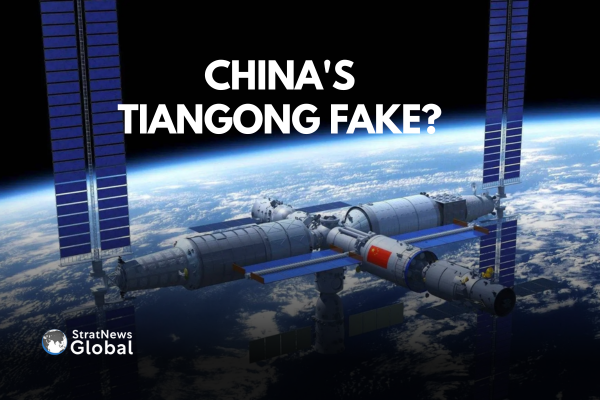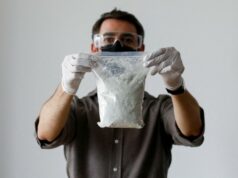A resurfaced screenshot from a 2021 science lesson aboard China’s Tiangong space station this week triggered a surge of online debate, with users questioning the authenticity of the footage and nationalist accounts rapidly mobilising in response.
Across Weibo, WeChat and Xiaohongshu, a provocative question spread at lightning speed: “Is China’s Tiangong Space Station fake?”
The screenshot, captured during a December 2021 demonstration in which astronaut Wang Yaping conducted the “Buoyancy Disappearance Experiment,” showed a water cup appearing motionless instead of floating in microgravity. As the image circulated again in November 2025, users scrutinised the frame and questioned why the cup seemed fixed in place.
The discussion quickly became one of the week’s most prominent topics on China’s tightly monitored internet. Skeptical posts examining the frame’s details ran alongside comments asking whether the scene had been staged or overly curated.
Nationalist users, often referred to as “little pinks,” responded immediately, flooding comment threads with patriotic slogans, denunciations of critics, and arguments defending the Chinese Communist Party. Their posts accused sceptics of attempting to discredit China’s space achievements.
Within hours, a familiar state-aligned slogan resurfaced in the form of the forcefully promoted hashtag #Anti-China Party Starts with One Image, Everything Else is Fabricated.The phrase is common on Chinese social media, used whenever critics share a single screenshot and question an official narrative. It roughly means “anti-China people take one picture and make up the rest.” This is not the first time the hashtag has appeared; it has been used in past debates about China’s military videos, Xinjiang images, and even earlier space-related posts where users questioned visual details. In the Tiangong case, the same slogan returned as nationalists tried to drown out scepticism by accusing doubters of fabricating stories from one frame.
Defenders argued that the cup was clipped in place and that surface tension explained the water’s behaviour. Sceptical users noted that while the full video does show Wang lifting the cup later, the tightly framed screenshot circulating online created room for confusion. Some commenters argued that selective visuals in official broadcasts often invite misinterpretation.
Others on social media mocked the intensity of the nationalist reaction, questioning why a minor rumour around a plastic cup prompted such a coordinated defence. The debate evolved into a mix of scientific explanations, sarcasm, nationalist rhetoric and continued questioning.
For several hours, Weibo hosted an unusually open contest of views, with sceptical posts briefly gaining traction before being overtaken by the dominant pro-government hashtag and related content amplifying the official position.
While the misunderstanding over the cup was eventually clarified through the full video, the episode highlighted how quickly online discussions in China can escalate, especially when they involve state-released imagery from high-profile national programmes such as Tiangong.
Research Associate at StratNewsGlobal, A keen observer of #China and Foreign Affairs. Writer, Weibo Trends, Analyst.
Twitter: @resham_sng





